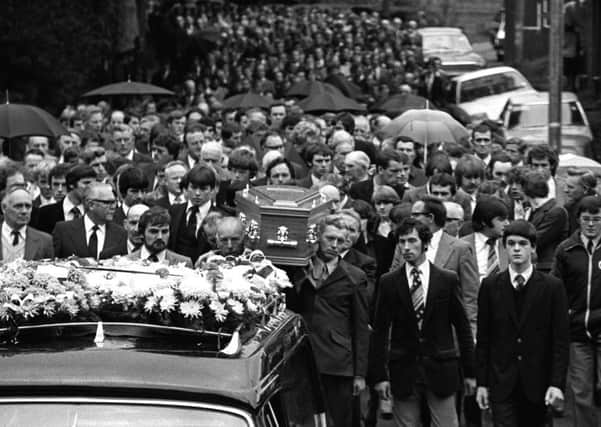Victims group spells out hunger strike toll outside of Maze


Bobby Sands died after 66 days without food in the Maze prison, with nine other republicans also fasting to death before the protest ended in October 1981.
As the drawn out actions of the IRA and INLA prisoners raised community tensions a surge in violence claimed the lives of many security force members as well as civilians on both sides of the divide. On Friday a film based on Sands’ protest – which was produced with the help of public money – went on general release.
Advertisement
Hide AdAdvertisement
Hide AdKenny Donaldson of the South East Fermanagh Foundation (SEFF) said it is important to both “remember and honour all those whose lives were extinguished outside the Maze prison walls” during one of Northern Ireland’s most turbulent periods.
Mr Donaldson said more than 50 people lost their lives while the hunger strikers carried on regardless.
“Inside those prison walls ten men took the choice, with the leadership of the republican movement at their back, to complete suicide. Those murdered and killed outside those prison walls did not have the choice to live because in most cases others decided that they had a right to play God in determining who would live and who should die,”
The SEFF director of services said: “Within those murdered and killed were members of the security forces who were murdered both on duty and off duty, there were also many civilians from across the community murdered and within this were four young children aged 11-15 years whose lives were cut short because they were brought out onto the streets by a terror movement which had a history of using children as human shields.
Advertisement
Hide AdAdvertisement
Hide Ad“In the year of the hunger strikes (1981) and in our own immediate area of south Fermanagh, PIRA sought to extinguish an entire family of brothers who served as part-time members of the Ulster Defence Regiment.
“They managed to murder two of them – Ronald and Cecil Graham – were unsuccessful in two assassination attempts on their brother Jimmy but they came back and murdered the married father-of-two just four years later - this is the legacy of the hunger strikes for the Graham family and the south Fermanagh community”.
Mr Donaldson added: “The death of 10 men on hunger strike was a human tragedy and no one with a semblance of Christianity within their DNA would take glee in their demise.
“Their families left behind mourn their loss and we acknowledge that. But what we will not ever acknowledge or accept is the manipulation of the truth, the 10 men who died on hunger strike were terrorists (as per national and international law) they were insurrectionists and they were criminals.”
Advertisement
Hide AdAdvertisement
Hide AdIn response to the launch of the Sands’ film, on Wednesday night SEFF will be screening their own documentary that includes the testimonies of those who were directly impacted by “the terrorism perpetrated by Bobby Sands and his ‘comrades’ within the Provisional IRA”.
Fermanagh/South Tyrone MP Tom Elliott branded BBC’s decision to part fund the hunger strike film “disgraceful,” while East Londonderry MP Gregory Campbell said he watched the film and found it “dramatic,” but “a million miles from an accurate depiction”.
A BBC spokeswoman defended the corporation’s support for the project. She said: “We seek to reflect the differing views and experiences of local communities across our output.”
The man behind the documentary, Brendan J Byrne denies it glorifies terrorism.
Advertisement
Hide AdAdvertisement
Hide AdHe said he tried to be as impartial as possible, and added: “I knew this would be controversial territory but, that said, I thought a proper examination of Bobby Sands, 35 years after he died, was something that was important.”